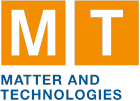Speakers
Dr
Lars Bozyk
(GSI)
Simone Aumüller
(GSI)
Description
To generate ultimate heavy ion beam intensities in synchrotrons, low charge states have to be used. This avoids stripping losses and the space charge limit is shifted to higher number of particles.
But at the same time, the probability for charge exchange in collision with residual gas molecules of such ions is much higher, than for highly charged heavy ions. Ionized ions are deflected different, than the reference ion and will get lost. At the position of impact on the beam pipe vacuum chamber, they induce a desorption process, which significantly increases the residual gas density in this area. This in turn increases the probability for further charge exchange processes, whereby a self-amplification up to complete beam loss can evolve. This mechanism limits the maximum possible heavy ion intensity.
To shift this limit to higher number of particles, several measures are possible. One is, to reduce the residual gas pressure, another is to reduce the number of desorbed gas particles by heavy ion impact. Both measures are subject of accelerator research within ST2 and simulations.
A cryogenic environment provides high pumping speed for all heavy residual gas particles. The installation of cryogenic surfaces in the existing room temperature synchrotron SIS18 at GSI has been investigated. Plans for a quadrupole chamber with cryogenic parts, which will be realized until and of the year, are presented.
Authors
Dr
Lars Bozyk
(GSI)
Simone Aumüller
(GSI)

